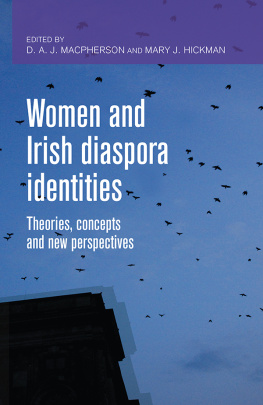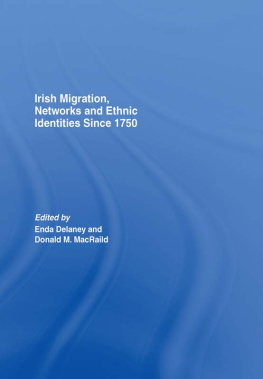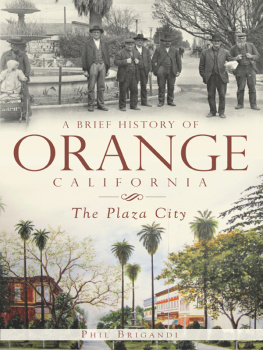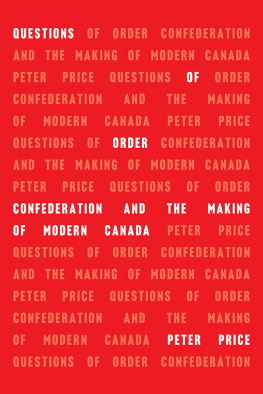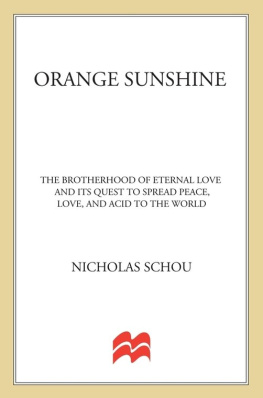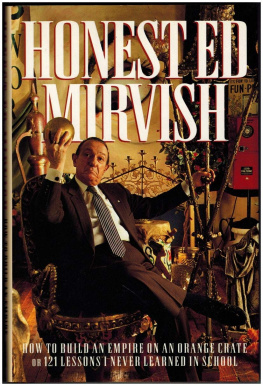Women and the Orange Order
Women and the Orange Order
Female activism, diaspora and empire in the British world, 18501940
D. A. J. MacPherson
Manchester University Press
Copyright D. A. J. MacPherson 2016
The right of D. A. J. MacPherson to be identified as the author of this work has been asserted by him in accordance with the Copyright, Designs and Patents Act 1988.
Published by Manchester University Press
Altrincham Street, Manchester M1 7JA
www.manchesteruniversitypress.co.uk
British Library Cataloguing-in-Publication Data
A catalogue record for this book is available from the British Library
Library of Congress Cataloging-in-Publication Data applied for
ISBN 978 0 7190 8731 8
First published 2016
The publisher has no responsibility for the persistence or accuracy of URLs for any external or third-party internet websites referred to in this book, and does not guarantee that any content on such websites is, or will remain, accurate or appropriate.
Typeset by
Servis Filmsetting Ltd, Stockport, Cheshire
Contents
Figures
Tables
Acknowledgements
Many individuals and institutions have helped in the writing of this book. Source material has come from a range of libraries and archives across Britain, Ireland and Canada and I am grateful, in particular, for all the help and assistance given to me by staff at the Linenhall Library, Belfast; the National Library of Ireland; the British Newspaper Library (formerly at Colindale); the Mitchell Library, Glasgow; NHS Greater Glasgow and Clyde Board Archive; the Archives of Ontario; Toronto Reference Library and the University of Western Ontario Archives. In gaining access to invaluable Orange Order archival material, I am indebted to the generosity of a number of individuals. At Schomberg House in Belfast, Jonathan Mattison, David Hume and David Scott assisted me greatly and provided access to the Grand Lodge of Irelands records. Olive Whitten, the Grand Mistress of the Association of Loyal Orangewomen of Ireland, was exceptionally kind in allowing me to use the records of her organisation and in showing me around a number of key Orange sites in Northern Ireland, including a splendid day out at Dan Winters cottage (following in the footsteps of Canadian Orangewomen, discussed in Ireland, Scotland, England and Canada whom I interviewed for sharing their thoughts and memories with me. The research for this book was funded by a number of sources and I am very grateful for the generous support of the International Council for Canadian Studies in allowing me to spend time working in Toronto. Much of the research for this book was carried out during my time at University College Dublins John Hume Institute for Global Irish Studies, where Brian Jackson was a constant source of encouragement and provided generous support for archival trips abroad. The final stages of writing this book were supported by a University of the Highlands and Islands Research Office sabbatical, and I am grateful to Michael Rayner for arranging this. I have completed this book in the convivial and supportive surroundings of the University of the Highlands and Islands Centre for History, and I thank Iain MacInnes, Alison MacWilliam, Elizabeth Ritchie, David Worthington and Kathrin Zickermann for tea, chats and walks by the beach in Dornoch. Earlier versions of this research were aired at events hosted by the University of Melbourne; the University of Salford; University College Dublin; Leeds Trinity University; the University of Bristol; the University of St Andrews; NUI Galway and the United Nations, New York. Some of this research has also appeared in part in the Journal of Imperial and Commonwealth History, Womens History Review, and Immigrants and Minorities I am grateful to the editors of these journals and the publisher, Taylor & Francis, for permission to reuse this material. As before, the publication team at Manchester University Press have been unceasingly supportive.
This book began life as a dimly plausible idea following a conversation with Don MacRaild about the archival sources that he had discovered at the Orange Hall in Hebburn, Co. Durham. I am exceptionally grateful for Dons generosity in sharing these sources, which started me on my Orange Order research and led to our joint article on womens lodges in the north-east of England, published in Irish Historical Studies (again, thank you to the editors and publisher, Cambridge University Press, for permission to use some of this material). This book ended with the supreme editing and sound advice of Kristin Lindfield-Ott, to whom I am enormously indebted, in so many ways. Finally, Id like to thank all the members of the Oak Cottage menagerie (Penny, Archie, Daisy, George, Clarice, Lucy, Henrietta, Harriet and Hillary), who have provided constant entertainment and diversion. In particular, Archies puppyish exuberance and unflagging enthusiasm for everything kept me going during the final stages of writing this book and his companionship on many a head-clearing beach walk, or snoozing at my feet, was always welcome.
Introduction
Long live the lassies, O! (Belfast Weekly News, 23 June 1938)
By the 1930s, the songs of the Orange Order reflected womens prominence and visibility in an organisation often portrayed as thoroughly male-dominated. Sung to the tune of the great Scottish poet Robert Burnss Green Grow the Rushes, O!, this ditty featured in the songbooks of Orangewomen (and men) across the British world. While focusing on womens great success in the Scottish institution, this song highlights many of the key themes explored throughout this book. Female Orangeism came to play a key role in the Orange Order and tens of thousands of women became Orange sisters because they wanted to help maintain a British world founded on the Empire and Protestantism. Exploring the experience of Orangewomen in England, Scotland and Canada tells us far more than just how and why they became members of the Orange Order in these different locations. Instead, this book demonstrates how largely ordinary, working-class women engaged in conservative associational life and political activism during the nineteenth and twentieth centuries, subverting various gender norms in their public work. Through migration and diasporic networks, these women were connected to their Orange sisters throughout the world and played a central role in upholding a British imperial identity well into the twentieth century.
From their origins in 1850s Lancashire through to their remarkable success in Scotland and Canada during the interwar period, this book tells, for the first time, the story of womens participation in the Orange Order up to the Second World War. The Orange Order is often characterised as a thoroughly masculinist brotherhood, associated with Irish sectarian violence. Women played a key role, however, in the development of Orangeism in the British world, and by the 1930s were numerically the most significant section of the Orange Order in Scotland. This book provides an important contribution to our understanding of Irish women within the diasporic contexts of Britain and Canada and addresses broader questions within migration history about the gendered nature of ethnic associational activity. It examines the growth and activism of Orangewomen in England, Scotland and Canada since the mid-nineteenth century and argues that they were central to the development of Orange associational culture up to the Second World War.


